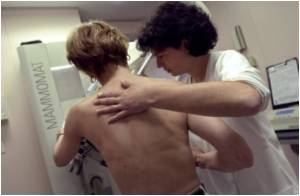A team of researchers has identified a molecular pathway that contributes to triple-negative breast cancer.

Experiments performed in Gonzalo's laboratory, in collaboration with the laboratories of Xavier Matias-Guiu and Adriana Duso (IRBLleida, Spain), showed that activation of this novel pathway not only allows tumor cells to grow unchecked, but also explains the reduced sensitivity of these types of tumors to current therapeutic strategies.
Importantly, vitamin D plays a role in turning off this pathway, providing a safe and cost-effective strategy to fight these types of tumors.
BRCA1 is a well-established tumor suppressor gene. Women who carry mutations in this gene have a high risk of developing breast and ovarian cancer. Tumors that arise often lack expression of three receptors: estrogen, progesterone and HER2 (thus, "triple-negative"), and do not respond to hormone therapy.
Loss of BRCA1 is bad news for the information contained in a cell's genetic blueprint. It results in genomic instability characterized by unrepaired DNA breaks and chromosomal aberrations that compromise cell viability.
How BRCA1-mutated cells are able to form tumors has been a long-standing question. Investigators recently showed that loss of another DNA repair factor, 53BP1, allows proliferation and survival of BRCA1-deficient cells. In addition, decreased levels of 53BP1 were observed in triple-negative breast cancers, and correlated with resistance to drugs at the forefront of cancer treatment, such as PARP inhibitors.
Advertisement
If lowering the levels of 53BP1 allows BRCA1 deficient cells to thrive and do their worst, increasing the levels of the protein offers a promising strategy for treatment of breast tumors.
Advertisement
Importantly, their evidence suggests that vitamin D treatment might restore the sensitivity to PARP inhibitors in patients who become resistant. Thus, a combination of vitamin D and PARP inhibitors could represent a novel therapeutic strategy for breast cancers with poor prognosis.
In a final exceptionally useful discovery, Gonzalo and collaborators found that high levels of nuclear CTSL and low levels of 53BP1 and nuclear vitamin D receptor (VDR) are a clear marker that identifies certain triple-negative breast cancer patients, biomarkers that offer the potential to customize future breast cancer therapies.
In particular, this triple-biomarker signature will allow the identification of patients in whom the pathway is on and who might benefit the most from vitamin D treatment.
The research was published recently in The Journal of Cell Biology.
Source-ANI














